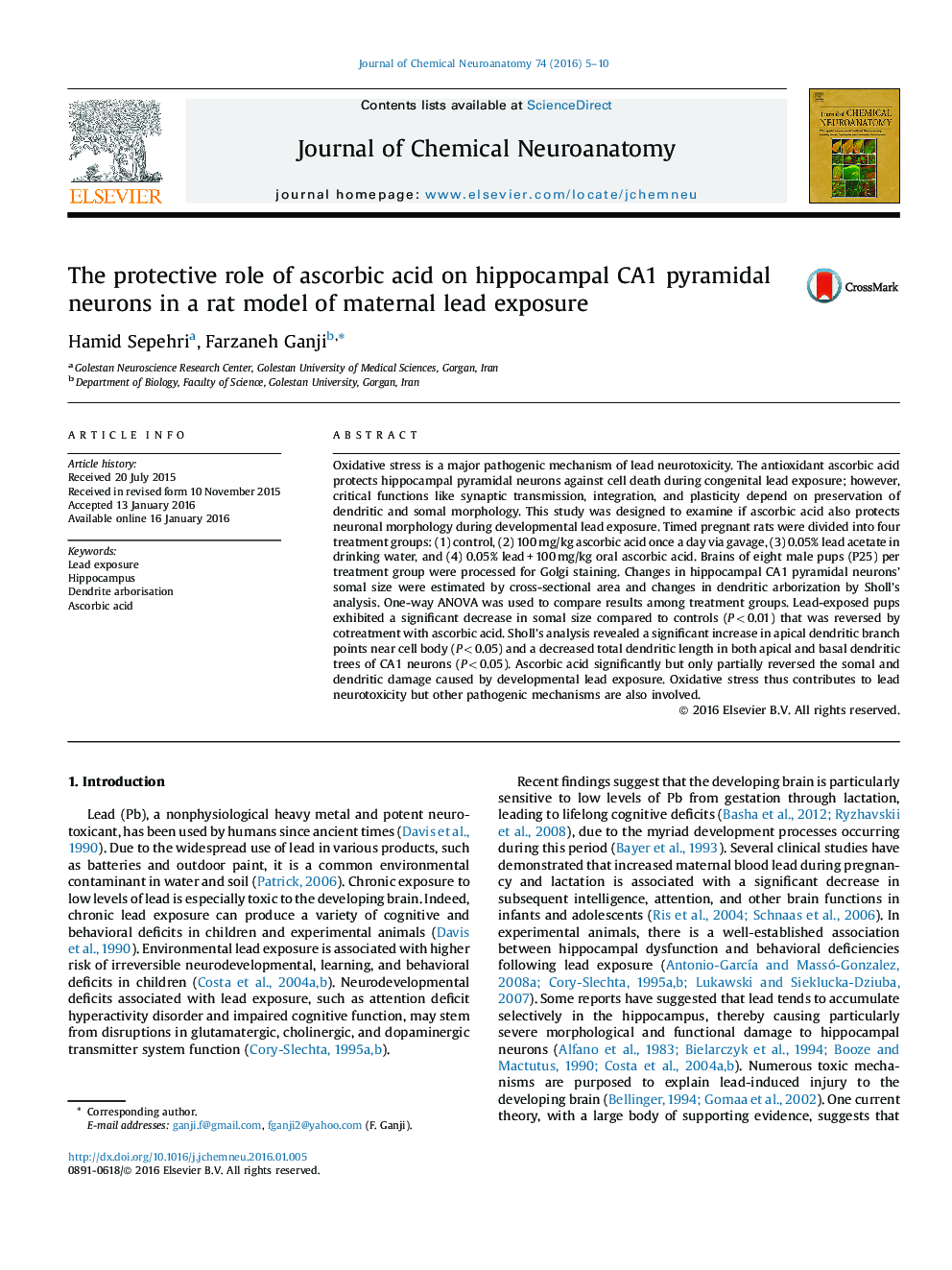| کد مقاله | کد نشریه | سال انتشار | مقاله انگلیسی | نسخه تمام متن |
|---|---|---|---|---|
| 1988687 | 1540446 | 2016 | 6 صفحه PDF | دانلود رایگان |
• Ascorbic acid protected against neuronal injury during developmental lead exposure.
• Rats were exposed to lead from early gestation to postnatal day 25.
• CA1 pyramidal neuron morphology was examined by Golgi staining.
• Ascorbic acid rescued lead-induced somal and dendritic shrinkage.
Oxidative stress is a major pathogenic mechanism of lead neurotoxicity. The antioxidant ascorbic acid protects hippocampal pyramidal neurons against cell death during congenital lead exposure; however, critical functions like synaptic transmission, integration, and plasticity depend on preservation of dendritic and somal morphology. This study was designed to examine if ascorbic acid also protects neuronal morphology during developmental lead exposure. Timed pregnant rats were divided into four treatment groups: (1) control, (2) 100 mg/kg ascorbic acid once a day via gavage, (3) 0.05% lead acetate in drinking water, and (4) 0.05% lead + 100 mg/kg oral ascorbic acid. Brains of eight male pups (P25) per treatment group were processed for Golgi staining. Changes in hippocampal CA1 pyramidal neurons’ somal size were estimated by cross-sectional area and changes in dendritic arborization by Sholl’s analysis. One-way ANOVA was used to compare results among treatment groups. Lead-exposed pups exhibited a significant decrease in somal size compared to controls (P < 0.01) that was reversed by cotreatment with ascorbic acid. Sholl’s analysis revealed a significant increase in apical dendritic branch points near cell body (P < 0.05) and a decreased total dendritic length in both apical and basal dendritic trees of CA1 neurons (P < 0.05). Ascorbic acid significantly but only partially reversed the somal and dendritic damage caused by developmental lead exposure. Oxidative stress thus contributes to lead neurotoxicity but other pathogenic mechanisms are also involved.
Journal: Journal of Chemical Neuroanatomy - Volume 74, July 2016, Pages 5–10
